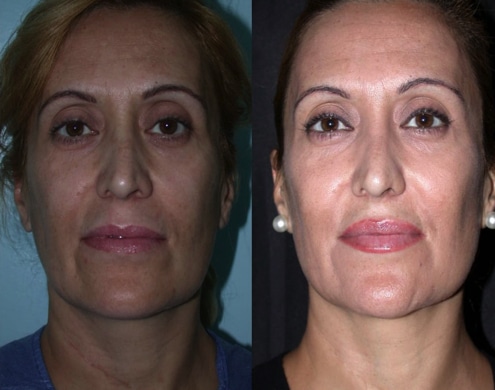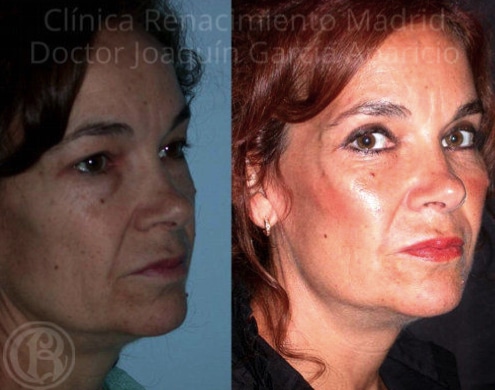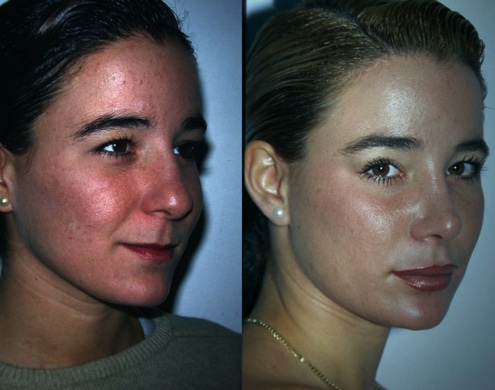16:30 to 20:00
What is Malaroplasty?
The lack of cheekbones can be due to an excess of fat in the cheek or a poor development of the malar bones or the fall of the malar fat.
In the first case, the solution consists in removing the fat (Bichat ball) and in the second case, in the placement of silicone prostheses.
Cheekbones that are too pronounced or flattened can cause an unsightly, tired or aging image. The cheekbones add elegance, simulate thinness and add symmetry to the facial physiognomy.
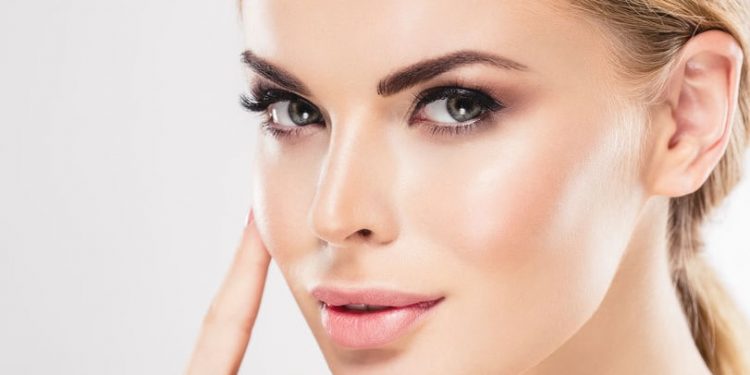
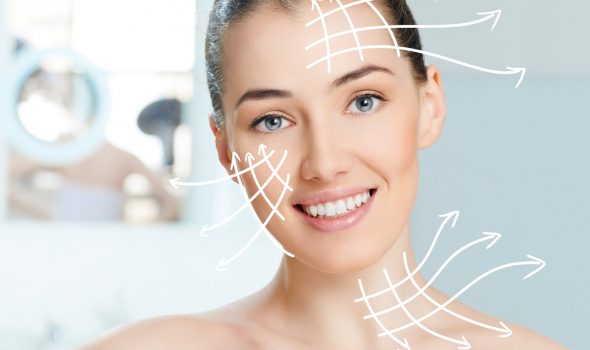
Malaroplasty
The cheek surgery It allows to harmonize facial structures and beautify the face, reduce wrinkles, and correct asymmetries of the middle third.
This procedure includes the surgical placement of a prosthesis through a small incision inside the mouth. It can also be done by lifting fat or by sanding the bone, a procedure known as an osteotomy.
Another way to accentuate the cheeks is by extraction of oral fat known as Bichat Balls, causing a lowering of the cheek with the consequent effect of increased cheekbones.
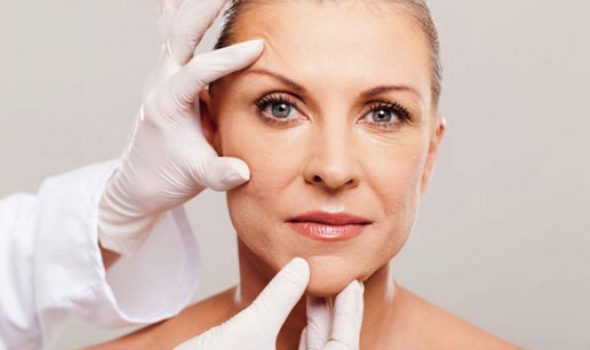
Facial Aesthetics | Malaroplasty
The Cheek Surgery or Malaroplasty can be combined with any facial and body surgery
Sunken cheekbones, like a retracted chin, can alter or ugly the face. This can be solved with the implantation of definitive prostheses, through an intervention known as Malaroplasty, increased cheekbones. With this we managed to improve the beauty of the cheekbones, offering a better expression to the eyes. Especially indicated in people who have a poorly developed malar (bone located at the level of the cheekbones). This intervention is usually performed alone, or as a complement to Rhinoplasty, Mentoplasty or Facial Rejuvenation.
Malaroplasty Details
Technique
Malaroplasty consists of the increase of the cheekbones through the introduction of synthetic material, a rigid silicone prosthesis, through an incision inside the mouth.
There is another access route, behind the hair at the level of the cheekbone or malar. Although this route is the most practiced because it is less laborious for the surgeon, our preference is the route through the inside of the mouth, since it offers better results for the patient, because the scar is not visible.
Duration and Anesthesia
The prostheses are usually placed under local or local anesthesia with sedation and on an outpatient basis.
The intervention lasts about an hour.
Postoperative
Malaroplasty usually causes an edema or swelling that begins to decrease after a week.
It is not painful. Most patients describe some discomfort or tightness, easily controllable with pain relievers.
During the first days a soft diet is recommended and cold applied to the area to help inflame as little as possible.
You should avoid doing physical activities for a month.
Results
It is a very flattering intervention.
The results are visible when the inflammation subsides. The result with prosthetics is permanent.
There is also the possibility of a dermal filler in the area, the duration of which is not permanent, approximately 12 to 18 months.
«I stayed as I wanted, what I asked for was what was done to me. Whenever a friend asks me, I send her directly to the Renaissance Madrid clinic ».

«I was informed about the treatments, the cases carried out by Dr. García-Aparicio and his career and I had it clear, I had to do it at the Renaissance Madrid Clinic»

«I consulted at least 5 clinics before choosing Renaissance Clinic Madrid. They were transparent at all times, they gave me the prices over the phone and Dr. Garcia Aparicio explained to me very detailed and easy to understand the whole process ».

Malaroplasty consists of the increase of the cheekbones through the introduction of synthetic material, a rigid silicone prosthesis, through an incision inside the mouth.
There is another access route, behind the hair at the level of the cheekbone or malar. Although this route is the most practiced because it is less laborious for the surgeon, our preference is the route through the inside of the mouth, since it offers better results for the patient, because the scar is not visible.
It can last about an hour and is performed under local or local anesthesia with sedation. During the surgery you will not feel any pain.
It is a very flattering intervention. The results are visible when the inflammation subsides. The result with prosthetics is permanent. There is also the possibility of a dermal filler in the area, the duration of which is not permanent, approximately 12 to 18 months.
All patients who wish to modify the facial structure of the cheekbone area can have access to this surgery. They are considered Malarplasty candidates:
- Patients who want an increase in cheekbones as a consequence of facial aging, restoring bone volume.
- Patients who want to modify the presence of a large protruding nose, very thick lips, droopy eyes, presence of bags on the lower eyelids and excess folds around the nose or eyes
- Patients who wish to smooth the nasolabial fold.
The intervention normally causes an edema or swelling that begins to decrease from the week. It is not painful. Most patients describe some discomfort or tightness, easily controllable with pain relievers. During the first days A soft diet is recommended and cold applied to the area to help it become inflamed as little as possible. Must be avoid doing physical activities for a month.
Cheek surgery allows facial structures to harmonize and beautify the face, reduce wrinkles, and correct asymmetries in the middle third.
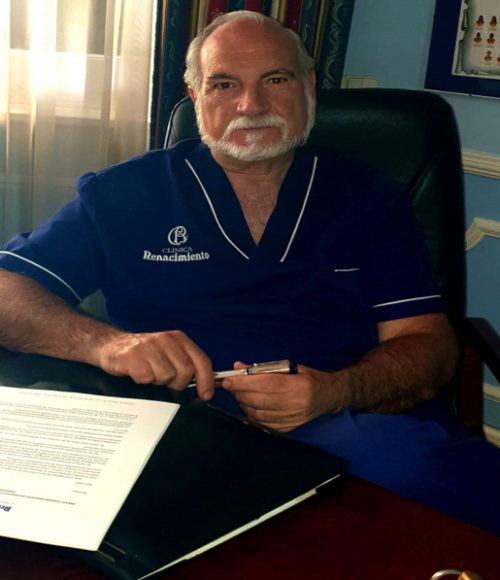
Dr. Joaquín García Aparicio
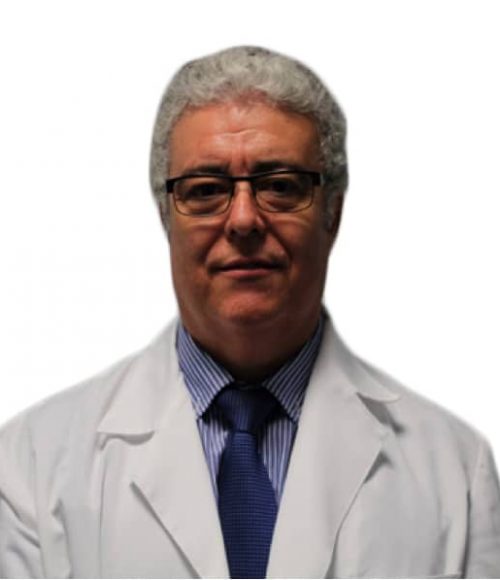
Doctor Andrés Merlo Morales
«I stayed as I wanted, what I asked for was what was done to me. Whenever a friend asks me, I send her directly to the Renaissance Madrid clinic ».

«I was informed about the treatments, the cases carried out by Dr. García-Aparicio and his career and I had it clear, I had to do it at the Renaissance Madrid Clinic»

«I consulted at least 5 clinics before choosing Renaissance Clinic Madrid. They were transparent at all times, they gave me the prices over the phone and Dr. Garcia Aparicio explained to me very detailed and easy to understand the whole process ».


Effects of the Sun on the Skin

How to prepare the skin for the summer?





